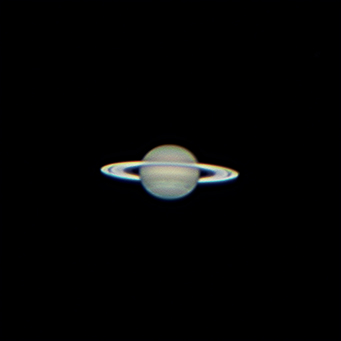

BruceMuseum.com
Greenwich, CT (203) 413-6744
Astronomical Society of Greenwich info
 |
The Astronomical Society of Greenwich |  BruceMuseum.com |
| The
Bruce Museum, Museum
Drive Greenwich, CT (203) 413-6744 Astronomical Society of Greenwich info |
Hi,
Attached is a picture of the Coat Hanger asterism. It is a 2 1/2 minute exposure taken at the Mary Aloysia Hardey Observatory September 15, 2011. This image was a test for a new field flattener lens, which worked very well, and a gibbous moon was high in the sky.
Coat Hanger 101…
The Coat hanger asterism is not a star cluster or constellation, but a random group of stars that form a ‘picture’. The stars that form the Coat Hanger are about 400 light years away. It can be found with binoculars high in the west this time of year in the constellation Vulpecula (the Fox).
The Big Dipper is another good example of an asterism. The Big Dipper is not a constellation. It is a small part of the constellation Ursa Major (the Great Bear). There are 88 official constellations, asterisms are not officially recognized but have names that ‘caught on’ due to their interesting shapes.
Just off to the right of the Coat Hanger is a small faint patch of stars. It is a true star cluster cataloged as Herschel H14-6 (NGC 6802). H14-6 is thousands of light years distant and contains hundreds of stars.
Image Technical Details…
76mm TeleVue Refractor w/Field Flattener
Canon T1i(a) modified camera
Image Assembled in Maxim DL5, Processed in Photoshop CS5
Enjoy,
Rick Bria
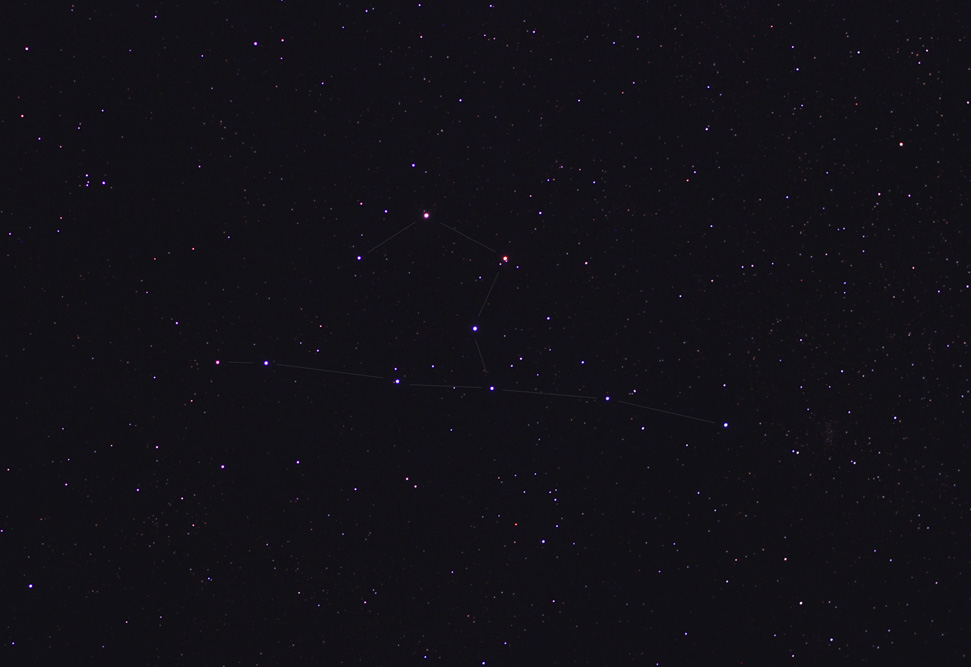
11/08/21
North American Nebula + Deneb from Stellafane 2011
Attached is a 3 stack of 3 minute JPEG images of a Cygnus section near the star Deneb and the North American Nebula. I acquired the images at the 2011 Stellafane Convention in Springfield Vermont from a spot near the entrance of the McGregor Observatory. Since Cygnus was almost straight up during the taking of this image there was no light pollution detected in the data. As a result, Gradient Exterminator wasn’t needed for this image… a first.
The brightest star in the constellation Cygnus, Deneb, is just right of center. The Reddish North American Nebula is also near the center of the image. It got its name because its shape resembles the North American continent.
North American Nebula 101…
The North American Nebula is just under 2000 light years away and about 100 light years across. Like all emission nebula, it is a hydrogen gas cloud that glows from the energy of a bright star or stars inside the nebula. A patch of dark nebula between us forms the ‘Gulf of Mexico’ silhouette.
Other fainter patches of red emission nebula are scattered throughout the area. Some I recognize, and some I didn’t even know were there. Anyone know what the large round patch towards the upper left edge is? I’m sure it must be cataloged but I can’t find any info on it.
Enjoy,
Rick Bria
Image Technical Details
Canon Modified T1i camera
15-85mm lens Taped @ 44mm @ F/5
AstroTrac on Tripod used to track the stars
JPEG 3 stack - 180 second exposure ISO-800
No calibration – JPEGS Stacked in MaximDL5 using SD Mask @.8
Processed in PhotoshopCS5
2011-07-30 Stellafane, VT near McGregor observatory 10:56PM – 11:03PM
Humid and 70-80 degrees? Transparency 8-10
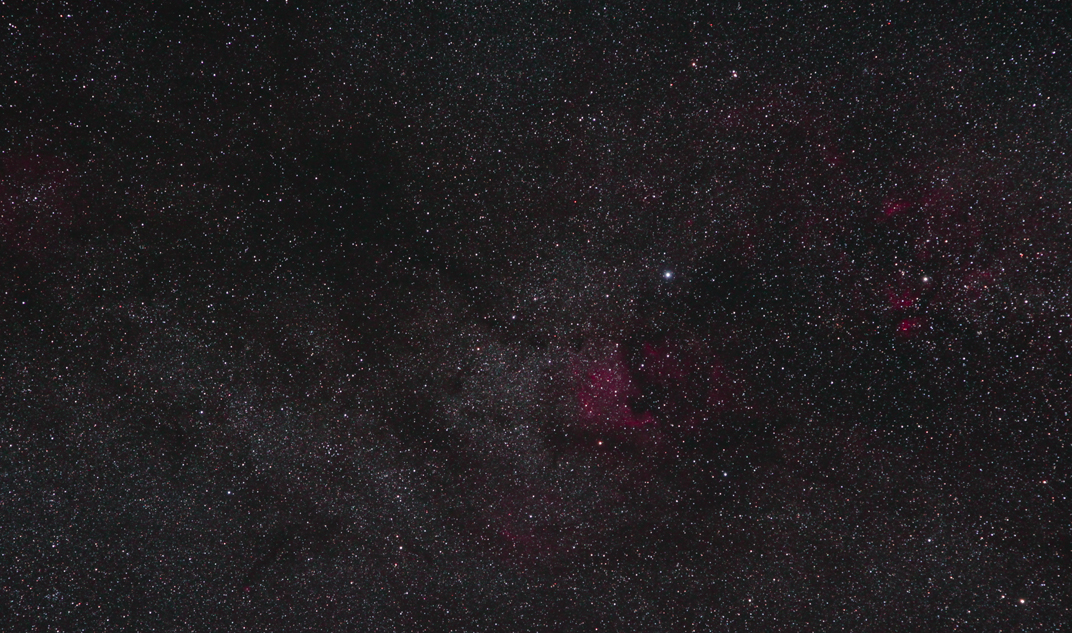
11/08/14
Constellation Sagittarius
Attached is a 6 stack of 3 minute images of the area near Sagittarius. I acquired the images at the 2011 Stellafane Convention in Springfield Vermont from a spot near the entrance of the McGregor Observatory. I used a modified Canon T1i with a 15-85mm lens set at 44mm. The camera was mounted on an AstroTrac to counter the Earth’s rotation.
Humidity was high, the night was warm and to my surprise there was light pollution near the horizon to the south in the direction of Sagittarius. Also, two of the images had planes fly through that were removed with a statistical combine in Maxim DLCCD5. After Digital Development in Maxim all remaining image processing was done in PhotoshopCS5. Gradient XTerminator was needed to minimize the light pollution gradient toward the bottom of the image. The image data would have been useless without it.
Sagittarius 101…
When we look toward the direction of Sagittarius we are looking toward the CENTER of our Milky Way Galaxy. Naturally we would expect a lot of ‘Stuff’ to be in that direction, and Sagittarius doesn’t disappoint. A second image is attached to label some objects of interest. Near the top is M20 the Trifid Nebula and M8 the Lagoon Nebula. To the left is the Globular star cluster M22. The two open (galactic) star clusters M6 and M7 are in the lower right of the image. The long lines running from M8 through M6 and down to the right represent the plane of the Milky Way Galaxy. It extends well beyond the boundaries of this image both down to the right and up to the left. Of course these and other objects in the area are best seen at higher magnification in a telescope, but I also like this wide angle view because it reminds me we are on a planet circling a star in the outskirts of a spiral galaxy. I hope to mosaic a few images together of this area at some point to further illustrate this.
It is easier for me to find the Teapot Asterism than the entire constellation of Sagittarius, so that is what I have outlined here. This is one of my favorite areas of the sky and this wide angle image was my goal for this Stellafane trip. I imaged until morning twilight using two cameras and three lenses and I’m fairly satisfied with the image harvest. I hope to process others from that trip soon.
Enjoy,
Rick Bria
Image Technical details…
Stellafane: Just outside the McGregor observatory.
Canon Modified T1i
15-85mm lens Taped @ 44mm
2 images @ F/5 + 4 images @ F/5.6 (didn’t realize that f/stop was set to 5.6 until 4 images were taken)
AstroTrac on Tripod used to track the stars for 3 minute exposures – Yield @ +95%
6 stack - 180 second exposure ISO-800
No calibration – Stacked in MaximDL5 using SD Mask @.8 + DDP
Processed in PhotoshopCS5
2011-07-30 10:33PM – 10:50PM Humid- 60-70 degrees??? Transparency 8-10
Two images contain planes that flew through and were removed using SD-Mask @.8.
Noticed some drift north and in RA. This was determined by noting hot pixels moving during image sequence movie playback. It seems 3 minutes is a good exposure for a high image yield @ 44mm FL. F/5 produces good stars. Four minute or longer exposures should be possible but at a lower yield.
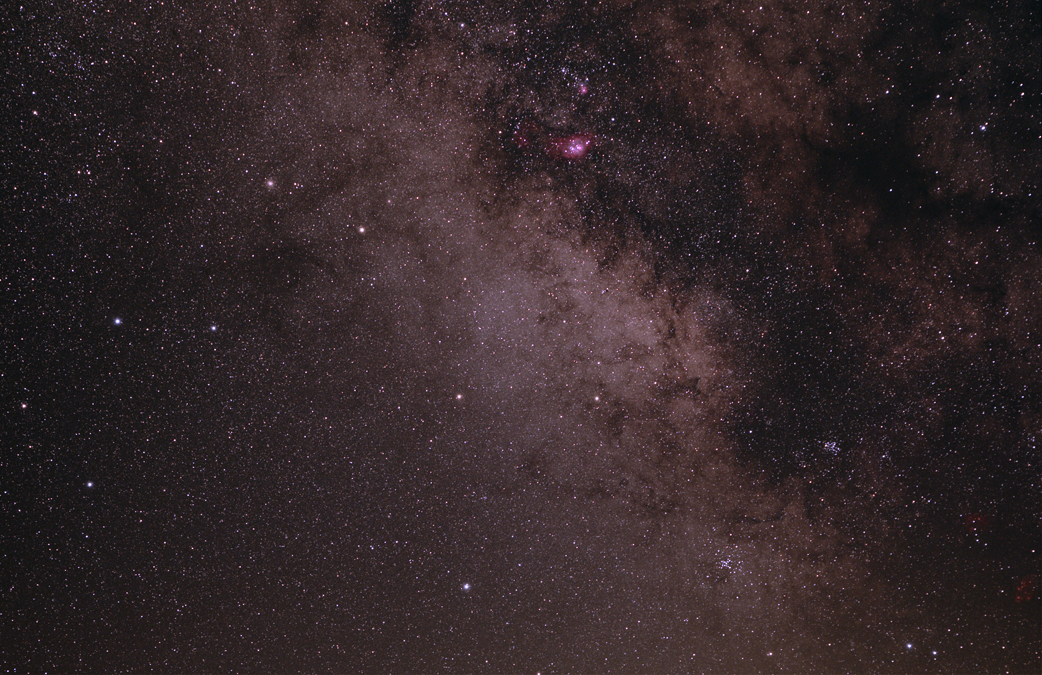
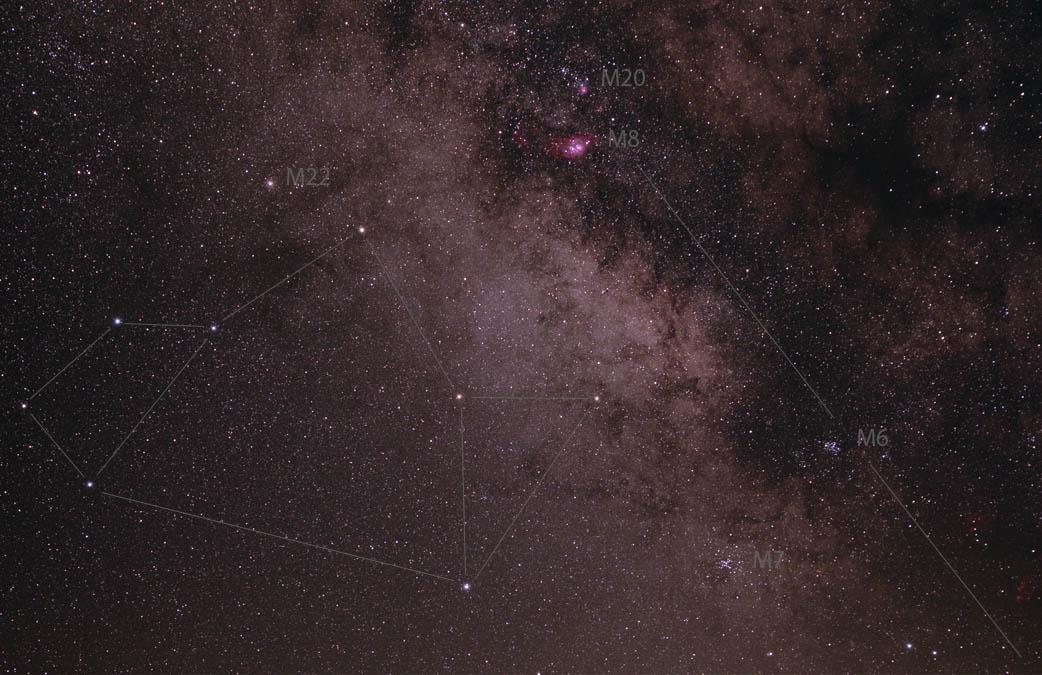
11/08/04
Saturn’s Storm 2010-2011
Attached is a picture of Saturn taken April 3rd, 2011 at the Mary Aloysia Hardey Observatory. On April 3rd the Sun, Earth and Saturn were almost in perfect alignment. When such an alignment with an outer planet occurs, the planet will be opposite the Sun in our sky, and is said to be at ‘opposition’. A planet at opposition will be close to the Earth in its orbit and will be well placed for observing and imaging. The alignment also has a brightening effect on Saturn’s rings. Known as the Seeliger effect, it is due to…
1) Improved reflection from ring particles and…
2) A complete lack of shadows from ring particles.
Saturn’s North Pole is DOWN in the attached image. Light cloud band details can be seen near the North Pole region. These details are from a rare Saturn storm detected in December of 2010. Only five storms large enough to be visible from Earth have occurred in the last 130 years. At first the storm was oval shaped, then winds caused it to look like a dragon (for weeks it was referred to as the ‘Dragon Storm’) but by April it stretched into light bands as seen in the lower part of the attached image.
The storm produced lightning 10,000 times stronger than lightning on Earth, 10 times a second for many days. It churned up white gases from deeper cloud layers inside Saturn. Saturn’s cloud-top winds stretched the storm into cloud bands. The resulting white stripes wrap completely around the polar region.
Image Technical details…
16” LX200 @f/10 4000mm fl
Canon T1i
Video from EOS Movie record @5X (29fps)
41 degrees F
Seeing 6-10
Breezy
Saturn 101…
Saturn is a ‘gas giant’ made of 75% hydrogen and 24% helium, plus a small rock core. It takes Saturn 29.5 years to orbit the Sun. Although much larger than the Earth, Saturn is unique among the planets by having a density less than water. For such a large planet, Saturn rotates fast. A day on Saturn is only 10 hours and 34 minutes. This rotation action whips this gas giant’s gases into light and dark bands.
But the real attraction to Saturn is its rings. The rings are countless water ice particles orbiting around Saturn. They are very bright because ice reflects sunlight very well. Speaking of sunlight, it takes sunlight reflected off of Saturn’s rings about 71 minutes to travel the 1.5 billion kilometers to reach Earth. Although spectacularly large, the rings are very thin. It is thought that if you put all the ring material into a ball, it would only be about half the size of Connecticut.
Saturn is the farthest planet you can see without optical aid, but it goes without saying that the true beauty of this planet is realized when viewed with a telescope.
Enjoy,
Rick Bria
